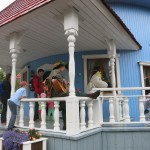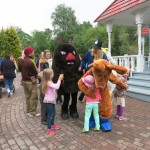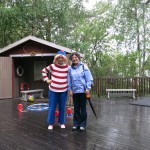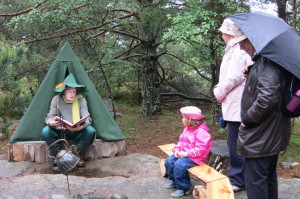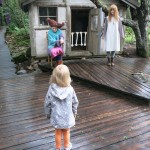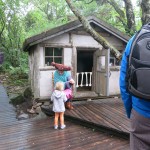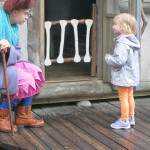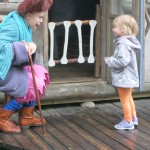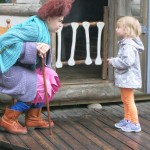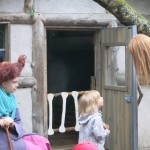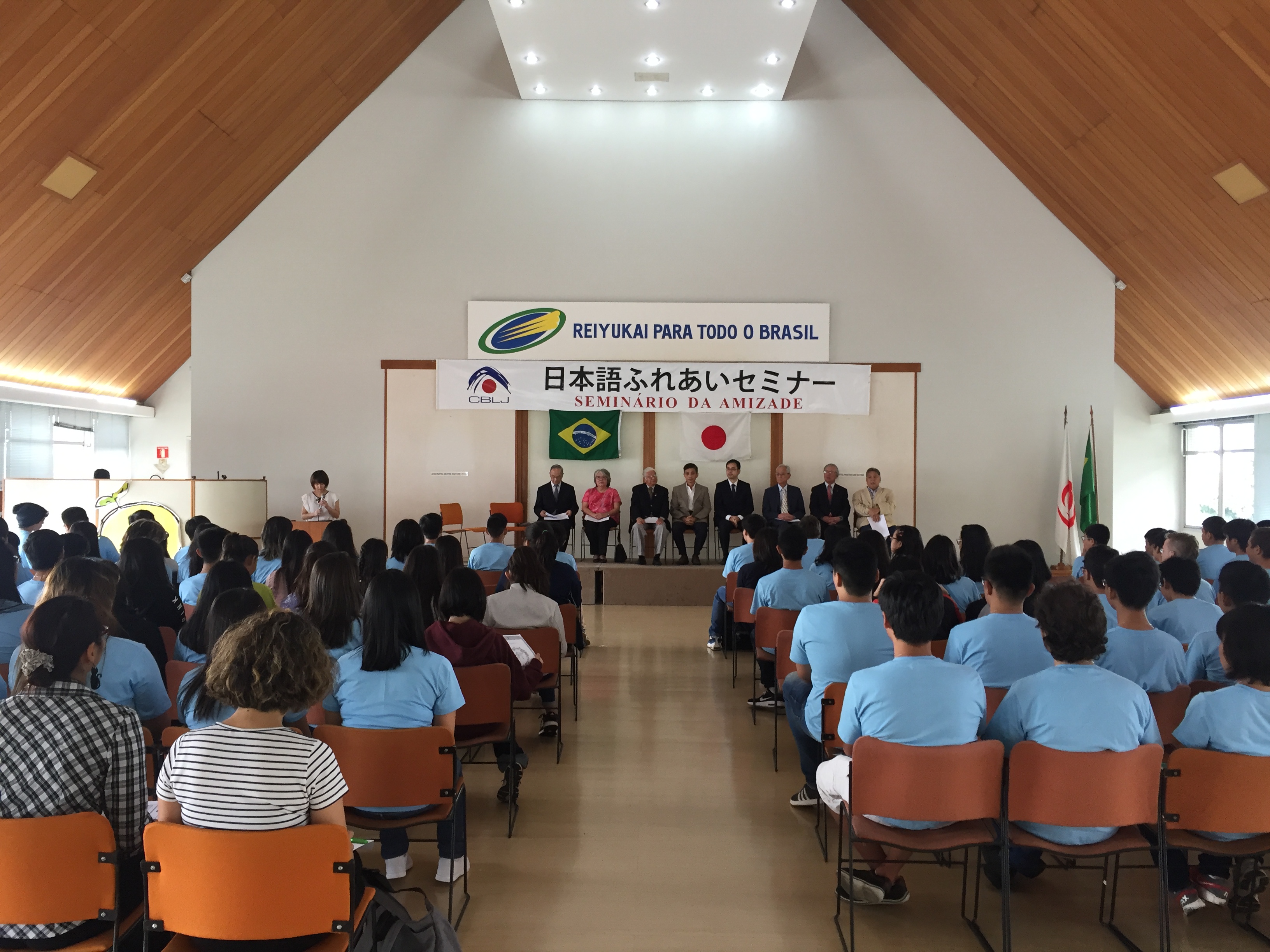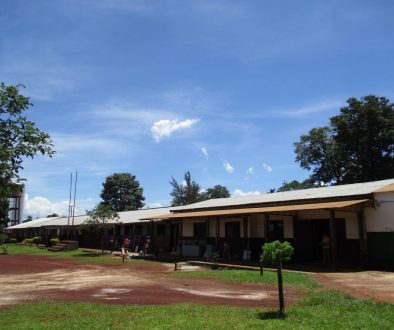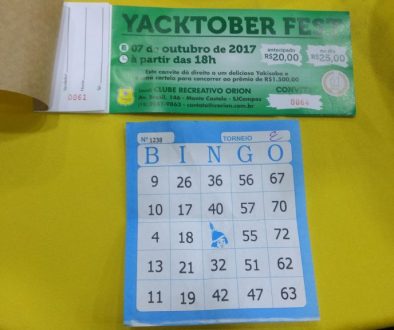SS 20(3) Moomin World and Multicultual ‘Kyosei(co-existence)’ ムーミン・ワールドと多文化「共生」
In Naantali, we had to park and leave the car. Then we got on the official bus to the coast, bought tickets and crossed the bridge. ナーンタリに着くと、車を特定の駐車場に停めます。その先からは、専用のバスが駐車場から海辺まで運んでくれ、海辺の施設でチケットを購入、それから橋を渡りました。
The Moominworld is located on one individual island and this is the entrance to the island.ムーミンワールドは一つの島がそのまま立地になっていて、これがその島への入り口です。
The map of the island is this website ムーミンワールドの地図はこのウェブサイトで。 http://www.muumimaailma.fi/en/info/moominworld_map
There were Moomin characters staying around the Moomin house in the middle of the island and they were willing to be taken photographs.島の中央に位置するムーミンの家の周りにはムーミンのキャラクターたちがうろうろしていて、みな、一緒に写真を撮っていました。
Since I have been researching on children’s language acquisition, I observed several interesting interaction between Mooming characters (adults) and children. For example, the time I visited was the beginning of summer holiday in Scandinavian countries, so tourist from Sweden as family holiday were there together with Finnish families. While I was walking along the trail of the park, I asked my friend what language children were speaking around us. 私は長年、子どもの言語習得について研究をしてきたので、ムーミンのキャラクター(成人)と子どもとの間のおもしろいやり取りをついつい観察してしまいました。例えば、私が訪れた時期はちょうど、スカンジナビアの国々で夏休みの初めにあたっていたので、スウェーデンからの家族旅行の人たちもフィンランド人家族と同様にいたわけです。そこで、公園の順路を辿りながら、友人に周りの子どもたちの言語がスウェーデン語か、フィンランド語か尋ねながら歩いていきました。
In Moomin world, those characters who looked as dolls completely were not permitted to speak a word, but the characters who were meant to be a human with costume were able to speak. This character, Snufkin in this photograph (original Swedish: Snusmumriken, Finnish: Nuuskamuikkunen) , was reading Moomin book in Swedish for this girl with grandparents from Sweden. According to my friend by listening his reading, she imagined he would have gone to Swedish medium school in Finland. My friend was not fluent in Swedish, but in Finland, being a bilingual country of Finnish and Swedish, she could recognize the language.ムーミンワールドでは、完全に着ぐるみで人形のように見えるキャラクターは話すことを許されず、一方で、もともと人間であり、コスチュームを来ているキャラクターは話すことができます。この写真のキャラクターのスナフキン(もともとのムーミン作者の母語で原語であるスウェーデン語ではSnusmumriken, フィンランド語では Nuuskamuikkunen)はムーミンの本をスウェーデンから祖父母とやってきた小さい女の子にスウェーデン語で読んであげていました。この音読を聞いていた私の友人によれば、彼女の予想ではこの「人」はフィンランドの中のスウェーデン語の教育を受けたのではないかと思うとのこと。私の友人はスウェーデン語が流暢ではないものの、フィンランドはフィンランド語とスウェーデン語のバイリンガルの国なので、彼女もスウェーデン語を認識できるわけです。
One more fascinating scene. This little Finnish speaking girl was passing by the Witch house. Then the witch invited her to have a look inside her house. First, this girl hesitated and looked up at her mother. But she was slowly approaching to the house. As the distance between the girl and witch was getting closer, this girl was engaged with talking to the witch and another character, and even I could see she was immersed in Moomin world. I wonder if this girl will remember this little conversation or her own experience to have visit the real witch house?もう一つ魅了された場面を。フィンランド語話者のこの小さい女の子が魔女の家の横を通り過ぎたときのこと。魔女は女の子に、自分の家の中をのぞいてごらんと誘いました。女の子はちょっと恥ずかしそうに、そして心配そうにお母さんの顔を見上げましたが、家にそろりそろりと歩み寄りました。女の子と魔女の距離が狭まるにつれて、女の子は話しの中に引き込まれ、魔女ともう一人のキャラクターと共にムーミンの世界に入り込んでいました。この女の子はこうした会話とか、本物の魔女の家を訪ねたという自分自身の経験を、将来、覚えているでしょうか。気になるところです。
Indeed, this Moomin world is run multilingually, Finnish, Swedish to start , and English, Japanese! and more. This is another multicultural ‘Kyosei (co-existence)’. まさに、このムーミン・ワールドは多言語で成り立っています、フィンランド語とスウェーデン語をはじめ、英語、日本語!、そのほか多言語で。ここにも多文化「共生」がありました。


